Were you excited about the arrival of New Coke? Do you still have some old LaserDiscs stashed in the back of your closet?
These products that failed also happened to be among the most overhyped in history.
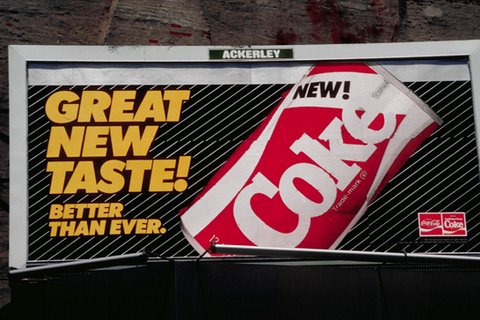 That's the sort of thing that keeps CEOs awake at night, because overhyped products that fail also tend to be public relations nightmares.
That's the sort of thing that keeps CEOs awake at night, because overhyped products that fail also tend to be public relations nightmares.
Predicting a failed product is not as easy as it might seem, however, since products can fail for a lot of reasons.
It could be that no one wants it, or that an unexpected fatal flaw arises, or that it's just not that good.
Each of these 11 products that flopped has a cautionary tale to tell...
11 Overhyped Products That FailedOverhyped Products That Failed No. 1: New Coke. Perhaps the most amazing product blunder of all time, The Coca-Cola Co. (NYSE: KO) launched New Coke in 1985 in response to market share losses to rival PepsiCo, Inc. (NYSE: PEP). Incredibly, the company replaced its flagship product with the new formula rather than simply adding a new beverage to the product line. Public outrage ensued, and Coca-Cola was forced to bring back the "Classic" drink just 79 days later.
Overhyped Products That Failed No. 2: The Zune. Five years after Apple Inc. (Nasdaq: AAPL) reinvented the portable music player with the iPod, Microsoft Corp. (Nasdaq: MSFT) came out with its copycat Zune player, hoping to get a piece of the action. The problem was that while the Zune was more or less as good as the iPod, it was a Johnny-come-lately product trying to crack a market that the iPod totally dominated. The iPhone and iPod Touch debuted within a year, further dooming the Zune. Microsoft was forced to give up on the product altogether in 2011.
You really have to wonder what the top executives at these companies were thinking when they gave these products the thumbs up...
Overhyped Products That Failed No. 3: The XFL. Seeing an opportunity that wasn't there, World Wrestling Entertainment, Inc. (NYSE: WWE) and NBC Universal (NYSE: CMCSA) teamed up in 2001 to create the short-lived XFL. And by short-lived, we mean one season. A reaction to the rule-heavy NFL, the XFL featured teams with violent names like the "Hitmen" and far fewer penalties. It also featured a lot of lousy players, and ratings tanked after the first week.
Overhyped Products That Failed No. 4: Newton. The period of time at Apple when Steve Jobs was in exile featured several miscues. But none was bigger than the Newton personal digital assistant. Today it looks laughably obsolete, but it was an impressive achievement back in 1993. Apple's mistake was to oversell the handwriting recognition feature, which was quite buggy. That failing ended up defining Newton, even though the handwriting recognition improved greatly over the life of the product. Jobs killed Newton upon his return in 1998, but perfected the concept a few years later with the iPhone.
Overhyped Products That Failed No. 5: The Edsel. Along with New Coke, Ford Motor Co.'s (NYSE: F) Edsel is a legend among product failures. Ford invested heavily in the auto's development, but the car, introduced in 1957 with much fanfare, failed to deliver on any level. Customers were unimpressed with the styling, and the pricing positioned the Edsel confusingly between existing Ford and Mercury models. Sales were abysmal, and Ford discontinued the car in 1960.
Overhyped Products That Failed No. 6: Windows Vista. Despite its dominance of the PC operating system market, Microsoft has had a rocky history with updates. Vista arrived five years after the popular Windows XP, and soon had users crying foul. It was buggy and slow, and its emphasis on improved security had the side effect of disabling a lot of older hardware and software. Many people who bought and installed Vista hated it so much they downgraded back to XP. Fortunately for Microsoft, Windows 7, released in 2009, got a much better reception.
Overhyped Products That Failed No. 7: Olestra. Discovered by researchers at The Procter & Gamble Co. (NYSE: PG) in 1968, the fat substitute Olestra was approved by the Food and Drug Administration in 1996 for use in snack foods. Two years later Frito-Lay launched its "WOW" line of chips, with a marketing campaign boasting of a fat-free chip. There was just one problem: Olestra does not get along particularly well with the human digestive system. Wrote Fast Company: "Sadly, the result was similar to that of a laxative - stomach cramps and diarrhea prevailed." Comedians pounced, as did the media, and sales plummeted. WOW chips were pulled from store shelves, but Olestra survived. After some tweaking in the lab, it lives on as Olean in several of Frito-Lay's "Light" versions of its chips.
Overhyped Products That Failed No. 8: Google Glass. Some might say it's too early to declare Google Inc.'s (Nasdaq: GOOG, GOOGL) best-known wearable tech product as a failure, but it's hard to see Google Glass recovering from the backlash it got when it debuted. Not only are people reluctant to wear the product because of how nerdy it makes them look, but anxiety over the device's camera has led to harassment of several Glass wearers. Apart from its questionable fashion sense, Google has never made it clear why anyone should shell out $1,500 for this thing.
Overhyped Products That Failed No. 9: Smokeless Cigarettes. Concern over the health hazards from cigarette smoking led R.J. Reynolds (NYSE: RAI) to invest $325 million in the1980s to create a breakthrough product - a smokeless cigarette dubbed "Premier." Instead of burning the tobacco, it simply heated it. That got rid of 70% of the carbon monoxide and all of the tar, but with one unfortunate consequence: Premier tasted awful and "smelled like burning garbage," according to Advertising Age. Within four months of its debut in 1989, Premier was history.
Overhyped Products That Failed No. 10: LaserDiscs. Before DVDs and Blu-Ray there were LaserDisks, a digital format for video as big as an old vinyl LP. They launched in 1978, just two years after the venerable VCR, but offered much better quality. But LaserDiscs were also a lot more expensive, and the movie studios released fewer films in the format than for VHS. On top of all that, there was no way for users to record their own. By the late 1990s, the format was fading, to be killed off for good by the arrival of DVDs.
Overhyped Products That Failed No. 11: Arch Deluxe Burger.
When you think of McDonald's Corp. (NYSE: MCD), you think of an upscale clientele, right? Hmmm... maybe not. But that was the demographic the fast food giant targeted with its Arch Deluxe burger in 1996. And McDonald's spent a staggering $100 million to promote it. Unfortunately, it was expensive and, at 610 calories, not very healthy. But the worst sin was that it wasn't all that tasty. McDonald's gradually phased out the ill-conceived burger.Follow me on Twitter @DavidGZeiler.
UP NEXT: While Apple has had its miscues over the years, it has managed to live up to the hype more often than not. Case in point: The iPhone 6. After months of hype, the latest iPhone sold a record-breaking 10 million units in is first weekend. But this success story is only just getting started...

 Alamy With about 10 million new iPhone 6s ordered in the initial days on the market, a whole lot of old iPhones are destined for the scrap heap. Sure, you could sell, donate or recycle your old iPhone, but you probably won't. And there are better things to do with it. One creative example: At the Missouri University of Science and Technology, a biology class is making old iPhones into microscopes. Using less than $10 worth of supplies, the old phones are mounted onto a lens and can magnify an object to 175 times its size. Even an old phone with a cracked screen can be repurposed, says Josh Smith, editor of GottaBeMobile.com. "You're only really limited by your imagination," Smith says. Here are 10 smart -- and cheap -- uses for old iPhones. Clock Set your old phone on a dock or a stand and use a clock app. With Standard Time ($3.99), you will have a timepiece unlike any other. With this app, your clock is a non-stop time lapse video of construction workers switching out pieces of lumber to shape the actual time. "It's mesmerizing," says Shawn Roberts, 47, an Oakland, California, marketing executive. You can also set up flexible alarms and get the phone to play soothing white noise as you go to sleep. Set it close enough to the bed, and it can be a sleep tracker, too, with an app like SleepBot (free). Music For Your Car Take your music library on the road. Some cars come equipped with docking ports for iPhones and have dashboard screens so you can navigate your musical options hands-free. Or you can just use the cigarette lighter for power. Remote Control Televisions, speakers and other devices now have apps that allow users to make their iPhones into sleek remotes. Carm Lyman, 42, of Napa, California, converted his iPhone 4 into a remote for his household sound system after his iPhone 5 arrived. Lyman can control the audio levels and activate speakers in various parts of his home as well as access different music services. Surveillance System Apps can convert an old iPhone that has access to WiFi into a surveillance camera and motion detector. Presence, which is a free app, provides a live stream from the area you want to monitor. You can set it up to record video clips when it detects motion, too. If you buy a robotic viewing stand for about $100, you can move the camera 360 degrees rather than stick with a stationary view. Cookbook No need to go through recipe books or hunt around for other devices when you have a kitchen iPhone. Download a cookbook app, such as My Recipe Book (99 cents) or Big Oven (free), and just leave the device on the kitchen counter. It takes up almost no space and will hold far more recipes than any book. Extra Storage Need a place to store old photos and music or other files? Turn your old phone into a storage drive using a free app like USB & Wi-Fi Flash Drive. Voice Recorder Why buy a digital voice recorder when you have a retired iPhone? Using any of several free apps, including Voice Recorder and Voice Record Pro, you will have a designated memo recorder or a device to record interviews and speeches. Document Scanner Genius Scan and Doc Scan are two apps that will turn an iPhone into a handy portable scanner that you can use for work, school reports, genealogical research, or recording receipts. And they won't cost you a penny. For $20 and up, you can buy a stand that makes your iPhone into a stationary scanner. Baby Monitor Sure, you can spend $100 or more on a baby monitor, or you can just set your old iPhone up to watch streaming video of your baby as well as hear and even talk to him or her. Cloud Baby Monitor ($3.99) also allows parents to receive the signal on a wireless network or on Wi-Fi so they don't have to be within a certain number of feet of the monitor. Vehicle Tracker Whether you need to find your car if it is stolen, record where you have traveled, or spy on your teenage driver, the built-in GPS in your phone can be used as a tracking device. An app like InstaMapper ($2.99) lets you watch the vehicle in real-time and have a record of it. Of course, you may end up taking the simple path of letting a child use your old iPhone as an iPod Touch. Keep in mind that the phone can still dial 911, even if it does not have cellular service, Smith said. You can also use your old phone as a back-up in case your new model suffers irreparable harm. That said, the battery of a phone that sits in a drawer unused could drain to the point where it is no longer viable.
Alamy With about 10 million new iPhone 6s ordered in the initial days on the market, a whole lot of old iPhones are destined for the scrap heap. Sure, you could sell, donate or recycle your old iPhone, but you probably won't. And there are better things to do with it. One creative example: At the Missouri University of Science and Technology, a biology class is making old iPhones into microscopes. Using less than $10 worth of supplies, the old phones are mounted onto a lens and can magnify an object to 175 times its size. Even an old phone with a cracked screen can be repurposed, says Josh Smith, editor of GottaBeMobile.com. "You're only really limited by your imagination," Smith says. Here are 10 smart -- and cheap -- uses for old iPhones. Clock Set your old phone on a dock or a stand and use a clock app. With Standard Time ($3.99), you will have a timepiece unlike any other. With this app, your clock is a non-stop time lapse video of construction workers switching out pieces of lumber to shape the actual time. "It's mesmerizing," says Shawn Roberts, 47, an Oakland, California, marketing executive. You can also set up flexible alarms and get the phone to play soothing white noise as you go to sleep. Set it close enough to the bed, and it can be a sleep tracker, too, with an app like SleepBot (free). Music For Your Car Take your music library on the road. Some cars come equipped with docking ports for iPhones and have dashboard screens so you can navigate your musical options hands-free. Or you can just use the cigarette lighter for power. Remote Control Televisions, speakers and other devices now have apps that allow users to make their iPhones into sleek remotes. Carm Lyman, 42, of Napa, California, converted his iPhone 4 into a remote for his household sound system after his iPhone 5 arrived. Lyman can control the audio levels and activate speakers in various parts of his home as well as access different music services. Surveillance System Apps can convert an old iPhone that has access to WiFi into a surveillance camera and motion detector. Presence, which is a free app, provides a live stream from the area you want to monitor. You can set it up to record video clips when it detects motion, too. If you buy a robotic viewing stand for about $100, you can move the camera 360 degrees rather than stick with a stationary view. Cookbook No need to go through recipe books or hunt around for other devices when you have a kitchen iPhone. Download a cookbook app, such as My Recipe Book (99 cents) or Big Oven (free), and just leave the device on the kitchen counter. It takes up almost no space and will hold far more recipes than any book. Extra Storage Need a place to store old photos and music or other files? Turn your old phone into a storage drive using a free app like USB & Wi-Fi Flash Drive. Voice Recorder Why buy a digital voice recorder when you have a retired iPhone? Using any of several free apps, including Voice Recorder and Voice Record Pro, you will have a designated memo recorder or a device to record interviews and speeches. Document Scanner Genius Scan and Doc Scan are two apps that will turn an iPhone into a handy portable scanner that you can use for work, school reports, genealogical research, or recording receipts. And they won't cost you a penny. For $20 and up, you can buy a stand that makes your iPhone into a stationary scanner. Baby Monitor Sure, you can spend $100 or more on a baby monitor, or you can just set your old iPhone up to watch streaming video of your baby as well as hear and even talk to him or her. Cloud Baby Monitor ($3.99) also allows parents to receive the signal on a wireless network or on Wi-Fi so they don't have to be within a certain number of feet of the monitor. Vehicle Tracker Whether you need to find your car if it is stolen, record where you have traveled, or spy on your teenage driver, the built-in GPS in your phone can be used as a tracking device. An app like InstaMapper ($2.99) lets you watch the vehicle in real-time and have a record of it. Of course, you may end up taking the simple path of letting a child use your old iPhone as an iPod Touch. Keep in mind that the phone can still dial 911, even if it does not have cellular service, Smith said. You can also use your old phone as a back-up in case your new model suffers irreparable harm. That said, the battery of a phone that sits in a drawer unused could drain to the point where it is no longer viable. Getty Images
Getty Images 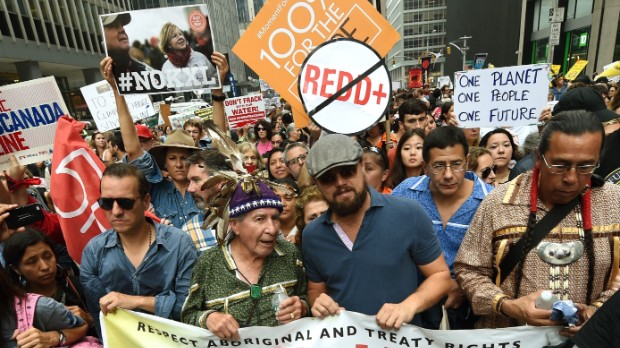 Thousands rally for climate change action NEW YORK (CNNMoney) The crusade against climate change has intensified in recent days as protesters take to the streets and wealthy investors like the Rockefellers vow to ditch fossil fuels.
Thousands rally for climate change action NEW YORK (CNNMoney) The crusade against climate change has intensified in recent days as protesters take to the streets and wealthy investors like the Rockefellers vow to ditch fossil fuels. 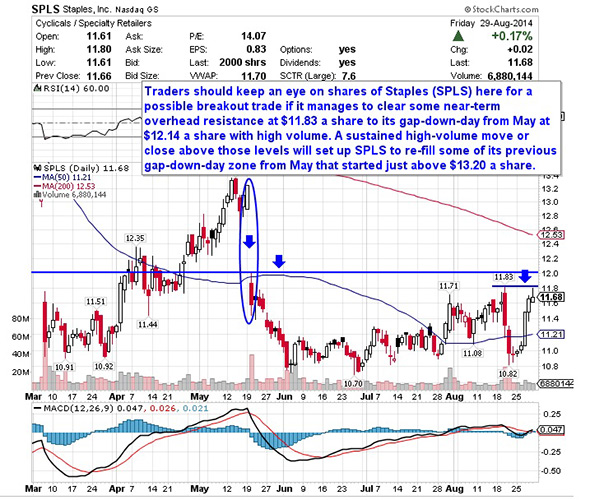
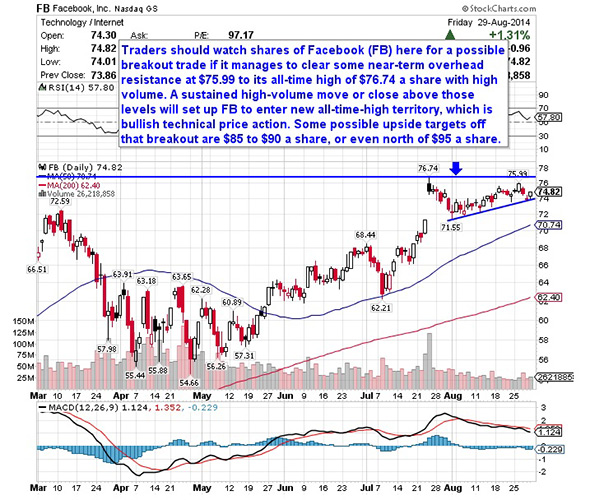
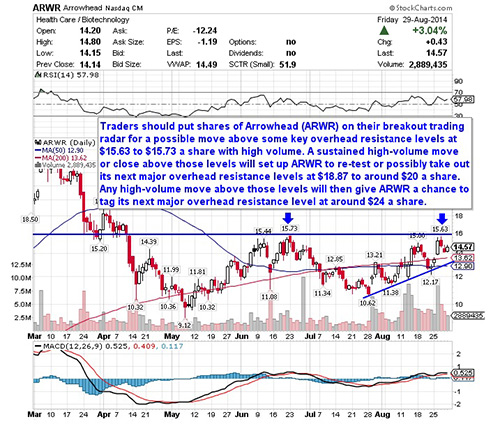
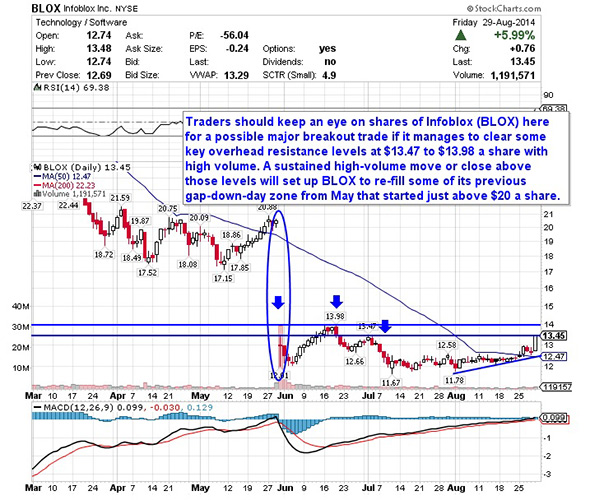
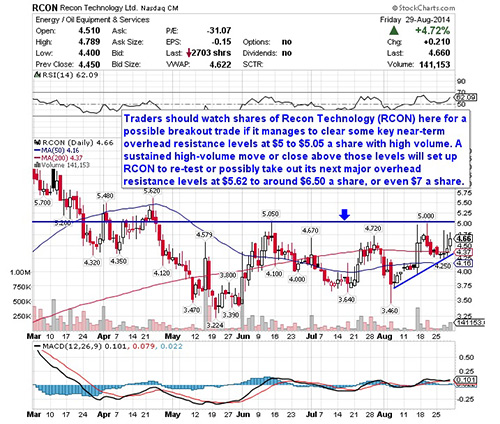
 Krisztian Bocsi/Bloomberg via Getty Images SAN FRANCISCO -- Holly Riggle, a 29-year-old white-collar worker from Ohio, is just the kind of everyday customer Apple (AAPL) would love to have for its new iPhone 6, which launches Friday. But Riggle is sticking to her Android smartphone, calling Apple less "original" than it was under former chief executive Steve Jobs. She's one of the 16 percent of respondents in a Reuters/Ipsos poll who said Apple had become somewhat or much less cool in the last two years. By comparison, some 11 percent of respondents said that Android had lost some sheen in the same time frame. In a similar poll a year ago, 14.3 percent of 1,379 people surveyed thought Apple had lost its cool image between 2011 and 2012. While still a juggernaut, with analysts expecting sales of around 9 million iPhone 6s in its launch weekend, Apple may be losing some of its shine, according to the poll. More Americans feel that Apple has lost its "coolness" quotient than has the Android brand, according to the poll, conducted Sept. 8-13. When questioned on how they perceive five popular technology brands -- Apple, Android, Microsoft (MSFT), Dell and Hewlett-Packard (HPQ) -- respondents gave the highest coolness factor rating to the Android brand, which includes devices such as Samsung and others that run on Google's (GOOG) mobile operating software.
Krisztian Bocsi/Bloomberg via Getty Images SAN FRANCISCO -- Holly Riggle, a 29-year-old white-collar worker from Ohio, is just the kind of everyday customer Apple (AAPL) would love to have for its new iPhone 6, which launches Friday. But Riggle is sticking to her Android smartphone, calling Apple less "original" than it was under former chief executive Steve Jobs. She's one of the 16 percent of respondents in a Reuters/Ipsos poll who said Apple had become somewhat or much less cool in the last two years. By comparison, some 11 percent of respondents said that Android had lost some sheen in the same time frame. In a similar poll a year ago, 14.3 percent of 1,379 people surveyed thought Apple had lost its cool image between 2011 and 2012. While still a juggernaut, with analysts expecting sales of around 9 million iPhone 6s in its launch weekend, Apple may be losing some of its shine, according to the poll. More Americans feel that Apple has lost its "coolness" quotient than has the Android brand, according to the poll, conducted Sept. 8-13. When questioned on how they perceive five popular technology brands -- Apple, Android, Microsoft (MSFT), Dell and Hewlett-Packard (HPQ) -- respondents gave the highest coolness factor rating to the Android brand, which includes devices such as Samsung and others that run on Google's (GOOG) mobile operating software.  AP
AP  The agro equipment giant, Deere & Co. (DE), is going through the toughest of times as crop prices are at all-time lows, and this has been taking a toll on equipment purchases at its home turf. Also the company has been witnessing continued decline in top and bottom lines for the previous few quarters. Soon after the USDA confirmed the mounting pressure on commodity prices early this year, Deere's management opted to take a cautious stand in terms of their forward sales guidance for the fiscal year. Under such a scenario, shareholders are tensed on whether they should be holding the stock for a long-term. Let's take a closer look at Deere's financial playbook to get to the final answer.
The agro equipment giant, Deere & Co. (DE), is going through the toughest of times as crop prices are at all-time lows, and this has been taking a toll on equipment purchases at its home turf. Also the company has been witnessing continued decline in top and bottom lines for the previous few quarters. Soon after the USDA confirmed the mounting pressure on commodity prices early this year, Deere's management opted to take a cautious stand in terms of their forward sales guidance for the fiscal year. Under such a scenario, shareholders are tensed on whether they should be holding the stock for a long-term. Let's take a closer look at Deere's financial playbook to get to the final answer.






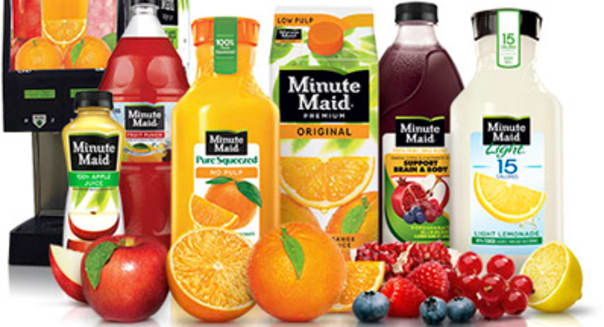 www.minutemaid.com As demonstrated by its recent purchase/asset-swap deal with energy drink company Monster Beverage (MNST), Coca-Cola (KO) is more than just a slinger of soda. The company draws billions of dollars in revenue from a other liquids, including Dasani water and Powerade sports drinks. That's par for the course in the sugary beverage industry. Coke's eternal rival PepsiCo (PEP) does a brisk business selling drinks that aren't soda, such as the Starbucks (SBUX) ready-made concoctions it offers in partnership with the coffee giant. PepsiCo, in fact, draws most of its revenue from food products. These include notable brands such as Doritos and Quaker Oats. Diversification is key in this business; there's only so much cola the world is willing to drink. With that in mind, here's a look at a trio of influential asset buys Coke made outside of its signature fizzy product line that have molded it into the behemoth we all know and love and will continue to shape the company. Minute Maid (1960) The history of Coca-Cola as a brand and company can be broken down roughly into three eras -- the soda fountain era (beginning when Coke was first served in 1886 to 1898), the bottle era (from 1899 to 1959), and what we can call the diversification era (from 1960 to the present). The latter began when Coke made its first non-soda buy that year. Through a stock swap it acquired the now-familiar line of orange juice products, notable for being the first such juice available in frozen concentrate form (making it available year-round no matter a customer's location). From then on, Coca-Cola became a company selling more than only carbonated beverages. This was a smart move -- these days, the firm boasts 11 non-soda brands that each take in more than $1 billion in revenue. They're Minute Maid (U.S.), Del Valle (South and Central America), Georgia (Japan), Aquarius (Japan), Powerade (U.S.), BonAqua (Hong Kong), Sokenbicha (Japan), Dasani (U.S.), Vitamin Water (U.S), Simply Orange (U.S.) and Minute Maid Pulpy (China). Columbia Pictures (1982) The early 1980s marked a brief era when Coke ventured far out of the beverage business to diversify. The target asset was Columbia Pictures, a storied Hollywood movie studio. Coke made an overwhelming bid for the company of $750 million, and just like that, it was in the film business. The results were mixed. The studio had success with several releases (like the enduringly popular underdog story "The Karate Kid"), but also unloaded the comedy "Ishtar" on the world. The expensive, poorly reviewed film became one of the most notorious bombs in Hollywood history. In spite of Columbia's wins (which also included TV hits thanks to Embassy Communications, a small-screen production outfit it bought in 1985), it couldn't escape the hit to its finances and reputation incurred by the $40 million loss from "Ishtar." It was time for Coke to return to fundamentals, and in 1989 it sold the bulked-up Columbia to a much more entertainment-oriented company, Japanese electronics giant Sony (SNE), for a fizzy $3.4 billion. Keurig Green Mountain (2014) Sometimes it's better to take an anchor stake -- and reach production, distribution and marketing deals with a target company -- rather than buy it outright. That seems to be the ambition for Coke with the Monster Beverage deal, as well as the arrangement it reached this past February with Keurig Green Mountain (GMCR). For $1.25 billion, Coke took a 10 percent stake in Keurig (later raised to 16 percent), maker of the K-Cup beverage pod brewing system. The two also signed a 10-year agreement to mutually develop Coke-branded offerings for the latter's Keurig Cold at-home drink-making device. Cold is a clear attempt by Keurig to grab some do-it-yourself-soft-drink market share from SodaStream (SODA), which has seen its sales grow robustly over the past few years. There's money to be made in this market, so Coke and Keurig are making a lunge for it. Expanding by Degrees Might this be the future for Coke: purchases of minority stakes and co-development deals? The company's acquisitions have historically been full-on buys rather than strategic purchases. The Monster Beverage and Keurig deals indicate a more cautious approach for the soda maker, as befits its stature as a conservative enterprise investors can rely on for profits and dividend income. Time will tell if this style of expansion will sweeten Coke's results or not. More from Eric Volkman
www.minutemaid.com As demonstrated by its recent purchase/asset-swap deal with energy drink company Monster Beverage (MNST), Coca-Cola (KO) is more than just a slinger of soda. The company draws billions of dollars in revenue from a other liquids, including Dasani water and Powerade sports drinks. That's par for the course in the sugary beverage industry. Coke's eternal rival PepsiCo (PEP) does a brisk business selling drinks that aren't soda, such as the Starbucks (SBUX) ready-made concoctions it offers in partnership with the coffee giant. PepsiCo, in fact, draws most of its revenue from food products. These include notable brands such as Doritos and Quaker Oats. Diversification is key in this business; there's only so much cola the world is willing to drink. With that in mind, here's a look at a trio of influential asset buys Coke made outside of its signature fizzy product line that have molded it into the behemoth we all know and love and will continue to shape the company. Minute Maid (1960) The history of Coca-Cola as a brand and company can be broken down roughly into three eras -- the soda fountain era (beginning when Coke was first served in 1886 to 1898), the bottle era (from 1899 to 1959), and what we can call the diversification era (from 1960 to the present). The latter began when Coke made its first non-soda buy that year. Through a stock swap it acquired the now-familiar line of orange juice products, notable for being the first such juice available in frozen concentrate form (making it available year-round no matter a customer's location). From then on, Coca-Cola became a company selling more than only carbonated beverages. This was a smart move -- these days, the firm boasts 11 non-soda brands that each take in more than $1 billion in revenue. They're Minute Maid (U.S.), Del Valle (South and Central America), Georgia (Japan), Aquarius (Japan), Powerade (U.S.), BonAqua (Hong Kong), Sokenbicha (Japan), Dasani (U.S.), Vitamin Water (U.S), Simply Orange (U.S.) and Minute Maid Pulpy (China). Columbia Pictures (1982) The early 1980s marked a brief era when Coke ventured far out of the beverage business to diversify. The target asset was Columbia Pictures, a storied Hollywood movie studio. Coke made an overwhelming bid for the company of $750 million, and just like that, it was in the film business. The results were mixed. The studio had success with several releases (like the enduringly popular underdog story "The Karate Kid"), but also unloaded the comedy "Ishtar" on the world. The expensive, poorly reviewed film became one of the most notorious bombs in Hollywood history. In spite of Columbia's wins (which also included TV hits thanks to Embassy Communications, a small-screen production outfit it bought in 1985), it couldn't escape the hit to its finances and reputation incurred by the $40 million loss from "Ishtar." It was time for Coke to return to fundamentals, and in 1989 it sold the bulked-up Columbia to a much more entertainment-oriented company, Japanese electronics giant Sony (SNE), for a fizzy $3.4 billion. Keurig Green Mountain (2014) Sometimes it's better to take an anchor stake -- and reach production, distribution and marketing deals with a target company -- rather than buy it outright. That seems to be the ambition for Coke with the Monster Beverage deal, as well as the arrangement it reached this past February with Keurig Green Mountain (GMCR). For $1.25 billion, Coke took a 10 percent stake in Keurig (later raised to 16 percent), maker of the K-Cup beverage pod brewing system. The two also signed a 10-year agreement to mutually develop Coke-branded offerings for the latter's Keurig Cold at-home drink-making device. Cold is a clear attempt by Keurig to grab some do-it-yourself-soft-drink market share from SodaStream (SODA), which has seen its sales grow robustly over the past few years. There's money to be made in this market, so Coke and Keurig are making a lunge for it. Expanding by Degrees Might this be the future for Coke: purchases of minority stakes and co-development deals? The company's acquisitions have historically been full-on buys rather than strategic purchases. The Monster Beverage and Keurig deals indicate a more cautious approach for the soda maker, as befits its stature as a conservative enterprise investors can rely on for profits and dividend income. Time will tell if this style of expansion will sweeten Coke's results or not. More from Eric Volkman